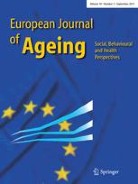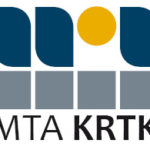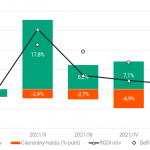
Using data from the COVID-19 questionnaire of the Survey of Health, Ageing and Retirement in Europe (SHARE), we investigate the time patterns of precautionary health behaviours of individuals aged 50 years and above during the summer of 2020, an easing phase of the COVID-19 pandemic in Europe. We also examine how these health behaviours differ by the presence of chronic conditions such as hypertension, high cholesterol level, heart disease, diabetes or chronic bronchitis, which can be considered as risk factors for COVID-19. Our results suggest that while on average, people became less precautious during the analysed time period, this is less so for those who are at higher risk. We also document large regional differences in precautionary health behaviours and show that higher-risk individuals are on average more cautious in all regions. We conclude that people adjusted their health behaviours in line with the generally understood risk of the COVID-19 disease. At the same time, our results also point out divergences in the level of willingness to take different precautionary steps.
Full article ⇒
Nem található esemény a közeljövőben.
A KRTK Közgazdaság-tudományi Intézet teljesítményéről A KRTK KTI a RePEc/IDEAS rangsorában, amely a világ közgazdaság-tudományi tanszékeit és intézeteit rangsorolja publikációs teljesítményük alapján, a legjobb ... Read More »

Tisztelt Kollégák! Tudományos kutatóként, intézeti vezetőként egész életünkben a kutatói szabadság és felelősség elve vezetett bennünket. Meggyőződésünk, hogy a tudomány csak akkor érhet el ... Read More »

Srí Lanka: a 2022-es gazdasági válság leckéje – A. Krueger Lessons from Sri Lanka Anne O. Krueger Jul 25, 2022 – Project Syndicate ... Read More »

A permanens válság korában élünk – J. Meadway We’re living in an age of permanent crisis – let’s stop planning for a ‘return ... Read More »

A 2021 végén, illetve 2022 elején tapaszalt 6, illetve 7%-os cserearányromlás brutális reáljövedelem-kivonást jelentett a magyar gazdaságból. A külső egyensúly alakulásával foglalkozó elemzések többnyire ... Read More »
